|
Message
From The Dean
Focus
on Health Sciences Library/
Learning Resources Center
By
Cam E. Enarson,
M.D., M.B.A.,
Dean, Creighton School of Medicine
Vice President for Health Sciences
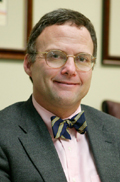 The
world is going digital, and the Creighton University Health
Sciences Library and Learning Resources Center is no exception.
This electronic revolution, coupled with rapid medical advancements,
creates unique opportunities as well as challenges. The
world is going digital, and the Creighton University Health
Sciences Library and Learning Resources Center is no exception.
This electronic revolution, coupled with rapid medical advancements,
creates unique opportunities as well as challenges.
One critical issue is content management – choosing
resources to best meet client needs, filtering information
for accuracy and relevancy, and providing information in user-friendly
formats.
Today, our Health Sciences Library provides its users with
seemingly instant and effortless access to a level of medical
knowledge that we could only have imagined a decade ago. New
discoveries that we once waited months to read about in peer-reviewed
publications are often available via electronic journals,
long before the findings appear in print. Online databases
allow clinicians to answer medical questions at the point
of patient care.
This level of service comes with a cost. In fiscal year 2005-06,
more than $1 million was spent on library materials, including
access privileges to electronic journals (2,200 specific to
the health sciences) and 800 print publications.
The library’s continuing goal is to support and anticipate
the information needs of Creighton health professionals –
faculty, staff, students and practitioners – for their
educational, research and clinical endeavors.
The library staff regularly seeks input from users on how
they can improve their services. That input led to a totally
redesigned website
in February 2007 to make it more user friendly, subject oriented
and curriculum integrated.
While our library becomes more and more “virtual”
in its content, it is important to recognize the human element
that makes it work. Indeed, today’s health sciences
librarian requires more training and continual updating of
skills than ever before.
I want to extend my personal thanks to Director Jim Bothmer
and his staff for their commitment and dedication to what
they do.
Health
Sciences Library
Library
Takes on New Look
By Jim Bothner
M.A.L.S., A.H.I.P
Director for Health Sciences Library/
Learning Resources Center
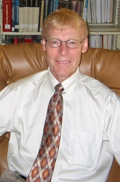 Walk
into the Creighton University Health Sciences Library and
Learning Resources Center, and something immediately becomes
clear. This is not your parents’ library – or
even, perhaps, your older sibling’s. Walk
into the Creighton University Health Sciences Library and
Learning Resources Center, and something immediately becomes
clear. This is not your parents’ library – or
even, perhaps, your older sibling’s.
Dialogue is encouraged– not discouraged. And where are
all the books? In what would have been counterintuitive a
generation ago, fewer books may actually contribute to the
learning process.
While there are still plenty of books and print journals,
our growing virtual presence has freed up valuable space,
allowing us to make the library more conducive to collaboration
and knowledge sharing in an attractive, user-friendly environment.
We’ve relaxed the rules about food and drink and, in
January, added a coffee shop to our 35,000-square feet of
space. The shop, which serves foods ranging from coffee to
scones to soup and sandwiches, has proved to be a hit among
faculty and students. Adding to the ambiance and collegial
atmosphere are cluster rooms, pub-style tables, 42 public-access
personal computers (including a computer laboratory), and
newer carpeting and air conditioning/heating.
And, the library is open 104.5 hours a week – 7:30 a.m.-midnight,
Monday through Thursday, 7:30 a.m.-10 p.m. on Fridays, 10
a.m.-8 p.m. on Saturdays, and 10 a.m.-midnight on Sundays.
If you have not visited us recently, come see us. If you have
ideas about how we can continue to improve our services, don’t
hesitate to let us know.
Back
to Contents
Appointments
Mohiuddin
Named Chair of Medicine
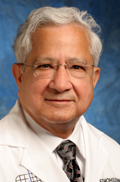 Syed
M. Mohiuddin, M.D., D.Sc., has been named chair of the Department
of Medicine at Creighton University School of Medicine. Syed
M. Mohiuddin, M.D., D.Sc., has been named chair of the Department
of Medicine at Creighton University School of Medicine.
Mohiuddin, who assumed the position on March 15, has served
as chief of the School of Medicine’s Division of Cardiology
and director of The Cardiac Center of Creighton University
Medical Center since 1996. In 2005, he was named the first
holder of the Richard W. Booth, M.D., Endowed Professorship
in Cardiology.
“Dr. Mohiuddin’s long association with the Creighton
School of Medicine as well as his exceptional record as a
teacher, researcher, clinician and administrator make him
an excellent choice to serve as chair of medicine,”
said Cam E. Enarson, M.D., Creighton vice president for health
sciences.
Mohiuddin joined Creighton’s School of Medicine as a
full-time faculty member in 1970. Since then, he has held
many positions at the university and received numerous awards
for his work at Creighton and in health care promotion. The
School of Medicine presented him with its Master Clinician
Award in 1999 and Distinguished Professor Award in 2001. Most
recently, Mohiuddin was named 2006 Medical Professional for
the Cause by the Metro Omaha Tobacco Action Coalition.
Board-certified in internal medicine and cardiovascular diseases
and specializing in noninvasive cardiology, Mohiuddin received
his medical degree from Osmania University in India. He completed
his residency in internal medicine at Creighton University
Medical Center and cardiovascular fellowship training at The
Cardiac Center. Mohiuddin went on to earn a doctor of science
in medicine degree at Laval University in Quebec before returning
to Creighton.
He is a fellow of the American College of Cardiology, the
American College of Chest Physicians, and the American Heart
Association Council on Clinical Cardiology. He is a member
of the Council of Arteriosclerosis, Thrombosis and Vascular
Biology; the Council on Clinical Cardiology; and the Council
on Epidemiology and Prevention Interdisciplinary Working Group
on Quality of Care and Outcomes Research.
Esterbrooks
Named Chief of Cardiology
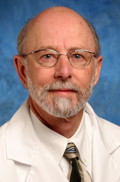 Dennis
J. Esterbrooks, M.D., has been
named
chief of the Division of Cardiology at Creighton University
School of Medicine and director of The Cardiac Center at Creighton
University Medical Center. Dennis
J. Esterbrooks, M.D., has been
named
chief of the Division of Cardiology at Creighton University
School of Medicine and director of The Cardiac Center at Creighton
University Medical Center.
Esterbrooks, who assumed the position on March 15, has served
as associate director of cardiology at Creighton since 1996.
"I have had the pleasure of working with Dr. Esterbrooks
for the past 27 years as a faculty member and for 10 years
as associate director of cardiology. I am certain he will
continue to maintain the very high standards of clinical practice,
education and research, which are the
hallmarks of the Division of Cardiology and The Cardiac Center,"
said Syed M. Mohiuddin, M.D., D.Sc., chair of the Department
of Medicine at Creighton University School of Medicine.
Esterbrooks joined the Creighton School of Medicine as a full-time
faculty member in 1979. Since then, he has held many positions
in the Division of Cardiology. He has directed Cardiac Rehabilitation
Services, the Office of Quality Management, the Non-Invasive
Imaging Laboratory, Outpatient Clinical Services, and Outreach
Services. In 1998, The School of Medicine presented Esterbrooks
with its Master Clinician Award.
Board-certified in internal medicine and cardiovascular diseases
and specializing in noninvasive cardiology, Esterbrooks received
his medical degree from Creighton University. He completed
his residency in internal
medicine and his cardiovascular fellowship at Creighton University
Medical Center. Esterbrooks is a fellow of the American College
of Cardiology.
Perry Appointed Pastoral Director
 The
Rev. Mr. Russ Perry has been named director of pastoral care
for Creighton University Medical Center (CUMC). The
Rev. Mr. Russ Perry has been named director of pastoral care
for Creighton University Medical Center (CUMC).
As director, he will deliver pastoral care services at the
medical center, including pastoral support for patients, families
and hospital staff, and oversee a Pastoral Care Team.
Perry was ordained as a permanent deacon in the Catholic Church,
Omaha Archdiocese, in 2003. Most recently, he had served as
hospital chaplain at CUMC and Mercy Hospital in Council Bluffs.
He is a volunteer chaplain for the Omaha Police Department
and chairman of the Archdiocesan Catholic Committee on Scouting.
A retired career U.S. Air Force officer, Perry holds a bachelor
of science degree in foreign service from Georgetown University,
Washington, D.C.; a master’s degree in communication
from University of Northern Colorado, Greeley; and a master’s
degree in homeland security affairs from the Naval Postgraduate
School, Monterey, Calif.
He is the first lay person to serve as CUMC director of pastoral
care. He assumed his position in February.
The Rev. Luis Rodriguez, S.J., joined the CUMC Pastoral Care
Team in 2000 and was named pastoral director in 2004. Fr.
Rodriguez has been assigned to serve as an assistant to the
provincial superior of the Wisconsin Province of the Society
of Jesus.
Casale
Elected President of AAAAI
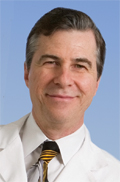 Thomas B. Casale, M.D., chief of the Creighton University
School of Medicine’s Division of Allergy/Immunology
has been elected president of the American Academy of Allergy,
Asthma and Immunology (AAAAI).
Thomas B. Casale, M.D., chief of the Creighton University
School of Medicine’s Division of Allergy/Immunology
has been elected president of the American Academy of Allergy,
Asthma and Immunology (AAAAI).
In announcing Casale’s selection, the academy noted
that he has “been very active in the development of
educational programs in allergy and immunology,” organizing
and directing more than 50 continuing medical education programs
for local and national meetings. He has published more than
200 scientific papers, reviews and chapters in his field.
At Creighton, Casale’s research is directed toward determination
and treatment of pathophysiologic mechanisms involved in asthma
and allergic diseases. He leads a large basic and clinical
research team examining the use of immunomodulators for the
treatment of inflammatory disorders.
The AAAAI is the largest professional medical specialty organization
in the United States representing allergists, asthma specialists,
clinical immunologists, allied health professionals and others
with a special interest in research and treatment of allergic
disease. The organization has more than 6,000 members worldwide.
Back
to Contents
In
the News
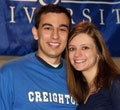
Stanojevic
with Rachel Waggoner. |
Match
Day Journey Chronicled
Slowly,
he opened a white envelope and unfolded a piece of plain white
paper. A grin spread across his face.
“Internal medicine. And it’s official,”
said Dusan Stanojevic. He then put on a blue T-shirt that
read “Creighton Lifer.” Stanojevic was one of
116 fourth-year medical students at Creighton University to
participate in March 15’s National Residency Match Program
ceremony.
The scene was repeated at 124 other medical schools across
the country, where future doctors learned whether they were
matched to the specialties and residency programs of choice
for their graduate medical educations.
Locally, Creighton’s Match Day and Stanojevic’s
amazing story were covered by the Omaha World-Herald,
KETV, and KPTM.
In the months leading up to Match Day, seniors investigated
programs in which they were interested, completed face-to-face
interviews, and then listed in order of preference the residency
programs in which they would most like to train. At the same
time, residency program officials conducted their own extensive
reviews of applicants and submitted their top selections to
fill first-year residency openings. A computer ultimately
made the final match-ups.
While there was a story behind each Creighton student’s
journey to Match Day, Stanojevic’s was particularly
compelling. Stanojevic, now 26, fled from his homeland of
Serbia in 1999 to avoid being drafted into the military. With
his parents’ life savings hidden in pretzel bags, he
came to America with dreams of becoming a doctor. He wound
up at Creighton as an undergraduate in the College of Arts
and Sciences.
Stanojevic notes that he had a lot of help along the way to
Match Day. His parents’ money only paid for one semester
of undergraduate study. Creighton assisted with scholarships.
Others stepped forward to assist, including Creighton employee
Alice Smith and her husband, Martin. The Smiths invited Stanojevic
to live with them, beginning the summer after his freshman
year.
Stanojevic also met his future bride, Rachel Waggoner, at
Creighton. In May, his parents will be in Omaha for the couple’s
wedding and Stanojevic’s graduation from medical school.
His parents and others were also able to watch Stanojevic
at Match Day, thanks to Creighton University Creative Services,
which for the first time did a live webcast of the event.
Ninety-eight connections were made to the webcast, and others
called to say they could not get on due to the high traffic
volume.
To view the webcast, go to http://www2.creighton.edu/doit/webcasting.
On Match Day, Creighton students matched in 15 specialty areas
at institutions in 29 states. Internal medicine was the most
popular specialty with 18 matches, followed by obstetrics/gynecology
(17), diagnostic radiology (15), anesthesiology (14), pediatrics
(14) and general surgery (10). Six will enter residencies
in family practice.
In addition to the 116 students participating in the National
Residency Match Program, six were placed through other match
programs.
O’Brien
Writes on Health Reform
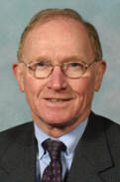 In
a Feb. 9 guest editorial appearing in the Omaha World-Herald,
Richard L. O’Brien, M.D., a professor at the Creighton
Center for Health Policy and Ethics, wrote about the need
for national health care reform. In
a Feb. 9 guest editorial appearing in the Omaha World-Herald,
Richard L. O’Brien, M.D., a professor at the Creighton
Center for Health Policy and Ethics, wrote about the need
for national health care reform.
“Costs are increasing at an unsustainable level. The
Medicare Trust Fund will be exhausted by 2018, necessitating
more funding or denial of care to the elderly. Middle-class
families are being priced out of the health insurance market,”
O’Brien warned.
The editorial came out in support of a study released in February
by a health care commission appointed by U.S. Sen. Chuck Hagel,
R-Neb. The report was unveiled during a press conference at
Creighton University.
“This comprehensive proposal has the potential to assure
all Americans access to high quality, affordable care provided
by their choice of insurers, professionals and facilities.
Poll after poll reveals that this is what Americans want and
that they believe fundamental change is necessary to achieve
it,” O’Brien wrote.
Frey
Speaks on Doctor Shortage
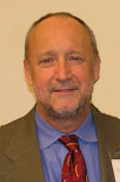 In
a February United Press International (UPI) national wire
story, Donald Frey, M.D., chair of Creighton’s Department
of Family Medicine, commented on a growing shortage of family
physicians. In
a February United Press International (UPI) national wire
story, Donald Frey, M.D., chair of Creighton’s Department
of Family Medicine, commented on a growing shortage of family
physicians.
He noted the lack of general practitioners is felt most acutely
in rural areas.
“Even if there were no pay gap, it would still be difficult
to get some physicians to go to rural areas,” he told
UPI. The income disparity “just makes the problem more
difficult.”
Back
to Contents
Research
Calcium/Vitamin
D May Reduce Fractures
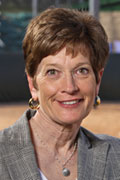 Calcium
and vitamin D supplementation may significantly reduce stress
fractures (overuse injuries to the bone) in young women with
physically active lifestyles, a study involving U.S. Navy
recruits suggests. Calcium
and vitamin D supplementation may significantly reduce stress
fractures (overuse injuries to the bone) in young women with
physically active lifestyles, a study involving U.S. Navy
recruits suggests.
The research was reported in February at the 53rd annual Orthopaedic
Research Society meeting at the San Diego Convention Center.
Associated Press and the New York Times covered the story.
The randomized, double-blind study, funded by the U.S. Department
of Defense, looked at 5,201 female U.S. Navy recruits during
eight weeks of basic training from 2002 to 2006 at Great Lakes
Naval Station near Chicago, Ill. About 3,700 women completed
the full study.
“What really surprised us is that calcium/vitamin D
supplements made a significant difference in such a short
period of time. Frankly, we were not sure we would see any
statistically significant results in only eight weeks,”
said principal investigator Joan Lappe, Ph.D., R.N., a professor
of nursing and medicine at Creighton University.
The women, ages 17 to 35, were divided into two groups with
one group receiving daily pill supplements of 2,000 Mg of
calcium and 800 IU of vitamin D, and the other group receiving
placebo pills. Calcium supports bone formation and repair,
while vitamin D helps the body absorb calcium.
During the study, 170 recruits in the placebo group experienced
stress fractures, about 25 percent more than in the group
taking the calcium/vitamin D supplements. A history of regular
exercise decreased the risk of stress fractures, while cigarette
smoking increased the risk.
Stress factures are one of the most common and debilitating
overuse injuries seen in U.S. military recruits in all branches
of the Armed Forces. The rates of stress fracture for females
are consistently higher than for males. Estimates are that
as many as 21 percent of all female recruits suffer this injury,
Lappe noted.
“Stress fractures often lead to chronic pain and disability,”
she said. “In addition, the financial impact is enormous
in terms of lost costs for recruits discharged from training.
One U.S. Army training base estimates the cost at $34,000
per (discharged) soldier, not including expenses related to
health care.”
The study shows that taking calcium/vitamin D supplements
can greatly reduce stress fractures in female military recruits,
many of whom are suddenly and dramatically increasing their
levels of physical, weight-bearing activity.
Lappe noted that the study may also have implications for
nonmilitary athletic populations, such as high school track
and field athletes, in whom stress fractures are also problematic.
“It appears that supplementation with calcium and vitamin
D provides a health-promoting, easy and inexpensive intervention
that does not interfere with training goals,” she said.
Study co-investigators include Diane Cullen, Ph.D., and Robert
Recker, M.D., both with the Creighton Osteoporosis Research
Center, and Capt. Kerry Thompson, Ph.D., and Renee Ahlf, both
with the U.S. Naval Institute for Dental and Biomedical Research.
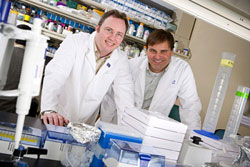
Jason
Bartz, Ph.D., left, and Anthony Kincaid, Ph.D. |
|
Prion
Disease Findings Reported
Creighton University researchers may have discovered a previously
unsuspected pathway, the nasal cavity, for the natural spread
of prion diseases – a class of diseases which includes
“mad cow” disease – among animals.
Anthony Kincaid, Ph.D., Creighton associate professor of physical
therapy, and Jason Bartz, Ph.D., assistant professor of medical
microbiology and immunology, reported their findings in the
Feb. 14 online edition of Journal of Virology.
Their study demonstrates for the first time that prion infection
can be experimentally spread by the inhalation of the agent
into the nasal cavity.
Until now, scientists have largely focused on ingestion as
the most likely way that animals acquire a prion disease in
nature. However, the results of the two-year Creighton study
that used hamsters indicates that the rodents contracted the
illness when a relatively small amount of prion-infected brain
homogenate was placed just below their nostrils.
While more studies need to be done to determine if the nasal
cavity is a route for the natural spread of prion diseases
in larger animals such as deer, elk, cattle and sheep, there
are reasons to suspect this mode of transmission, the researchers
said.
“Each of these species has a well-developed olfactory
system that is used for finding food, detecting predators
and for reproductive purposes, therefore their nasal cavity
is frequently directly exposed to elements of the environment
that may contain prions,” noted Kincaid, the study’s
principal investigator.
Prion diseases are a group of fatal neurodegenerative diseases
that include chronic wasting disease (CWD), and bovine spongiform
encephalopathy (BSE), commonly referred to as “mad cow”
disease. While the reported incidence of BSE in this country
is rare, CWD infects relatively large numbers of farmed and
wild elk and deer in parts of several U.S. states and Canada
with the highest incidence occurring in a geographical region
that includes sections of Nebraska, Colorado and Wyoming.
The Nebraska tobacco settlement trust fund financed the study.
A news article on the study appeared in the Omaha World-Herald.
Intensive
Program Helps Smokers Quit
 Hospitalized patients who undergo structured treatment to
quit smoking are significantly more likely to remain smoke-free,
says a new study by The Cardiac Center at Creighton University
Medical Center.
Hospitalized patients who undergo structured treatment to
quit smoking are significantly more likely to remain smoke-free,
says a new study by The Cardiac Center at Creighton University
Medical Center.
The research appeared in the February issue of CHEST,
a journal of the American College of Chest Physicians. It
suggests that high-risk smokers with acute cardiovascular
disease are three to four times more likely to quit smoking
when treated with an intensive smoking cessation program.
"Smoking is the greatest risk factor for patients with
heart disease," said Creighton principal investigator
Syed M. Mohiuddin, M.D., F.C.C.P., "and our study showed
that intense treatment intervention not only succeeded in
getting patients to quit smoking, but it reduced hospitalizations
and mortality as well."
From January 2001 to December 2002, Mohiuddin and colleagues
gathered 209 patients who were admitted to the coronary care
unit at the Creighton University Medical Center, suffering
from unstable angina, heart attack, or severe coronary heart
disease. All of the patients were self-identified smokers
and agreed to undergo smoking cessation intervention. Patients
were then randomized into two groups: an intensive-intervention
group (109) and a usual-care group (100).
Prior to hospital discharge, all patients received approximately
30 minutes of counseling and were given self-help materials.
Treatment in the intervention group also included a minimum
of 12 weeks of behavior modification counseling, coupled with
individualized pharmacotherapy. This included nicotine replacement
therapy and/or bupropion at no cost to the patient. However,
patients in the usual care group did not receive anything
beyond the initial inpatient counseling session.
Compared with the usual care group, patients in the intensive
treatment group had significantly higher quit rates at all
follow-up intervals. After two years, 39 percent of the intensive
treatment group was continuously abstinent, compared with
only 9 percent of the usual care group. Additionally, treatment
was shown to reduce the risk of hospitalization by nearly
half; those in the control group were four times as likely
to die than were patients in the intervention group.
"Cessation of smoking results in an almost immediate
improvement in the risk of heart attack," said Mohiuddin,
"and our study proves that intense smoking cessation
treatment in high-risk patients is successful and that it
saves lives."
Some
U.S. Children Still Exposed to High Lead Levels
 Lead
poisoning continues to be a serious cause of learning and
behavioral problems in at-risk children, according to a March
25 article in USA Today that quotes Aimin Chen, M.D., Ph.D.,
a Creighton assistant professor of preventive medicine and
former researcher with the National Institute of Environmental
Health Sciences. Chen was the principal author of a study
published in the February online edition of Pediatrics. His
study looked at the effects of lead in 7-year-old children. Lead
poisoning continues to be a serious cause of learning and
behavioral problems in at-risk children, according to a March
25 article in USA Today that quotes Aimin Chen, M.D., Ph.D.,
a Creighton assistant professor of preventive medicine and
former researcher with the National Institute of Environmental
Health Sciences. Chen was the principal author of a study
published in the February online edition of Pediatrics. His
study looked at the effects of lead in 7-year-old children.
Children most at risk include urban children living in old
buildings with lead-based paint (banned in 1978) and playing
in areas contaminated with lead-paint dust or emissions from
leaded gasoline (phased out in the early 1990s), the USA Today
article noted.
Back
to Contents
Briefly
Noted
Haddad
Earns Pellegrino Medal
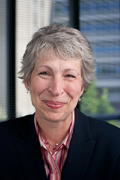 Amy
Haddad, Ph.D., R.N., director of the Center for Health Policy
and Ethics at Creighton University Medical Center, will receive
a Pellegrino Medal for her contributions to health care ethics. Amy
Haddad, Ph.D., R.N., director of the Center for Health Policy
and Ethics at Creighton University Medical Center, will receive
a Pellegrino Medal for her contributions to health care ethics.
The award was presented in April during an annual conference
of the Healthcare Ethics and Law Institute (HEAL) at Samford
University in Birmingham, Ala.
The medal is named for Edmund D. Pellegrino, M.D., the first
recipient of a lifetime achievement award from the American
Society for Bioethics and Humanities. Pellegrino, a long standing
member of the Georgetown University faculty, has been called
the “father of the American bioethics movement.”
The author of numerous articles and several books, Haddad
is co-author of “Health Professional and Patient Interaction,”
which received the 2003 Alpha Sigma Nu National Jesuit Book
Award in health sciences.
Fernandez
Wins Women’s Award
 Christina
Fernandez, M.D., an assistant professor of pediatrics at Creighton
University School of Medicine, has earned the University of
Nebraska at Omaha Women of Color Award. Christina
Fernandez, M.D., an assistant professor of pediatrics at Creighton
University School of Medicine, has earned the University of
Nebraska at Omaha Women of Color Award.
Fernandez, who earned the award in the education category,
was one of six women honored at the fifth annual Women of
Color Awards luncheon in March.
The awards acknowledge outstanding contributions and leadership
by women of color in the Omaha area.
Organizations and individuals were asked to nominate women
of color for the awards in six categories: arts and humanities,
business/entrepreneurship, community service, education, science
and technology, and youth leadership.
In recognizing Fernandez, the awards committee noted that
pediatric residents describe Fernandez as “an extraordinary
mentor and teacher. She has been known to say to them: ‘Call
me anytime if you need help – even in the middle of
the night.’” The committee also cited her involvement
in efforts to fight childhood obesity.
Rafferty
Gets Education Award
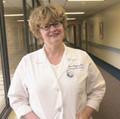 Karen
Rafferty, R.D., L.M.N.T., senior research dietitian for the
Osteoporosis Research Center at Creighton University Medical
Center, has been awarded the 2006 Joan Werblow Nutrition Education
Award. Karen
Rafferty, R.D., L.M.N.T., senior research dietitian for the
Osteoporosis Research Center at Creighton University Medical
Center, has been awarded the 2006 Joan Werblow Nutrition Education
Award.
The award, which recognizes exceptional leadership in nutrition
education by promoting the health benefits of dairy foods,
was presented by the American Dairy Association and Dairy
Council of Nebraska at the organization’s annual meeting.
Rafferty is an award-winning author and respected voice in
calcium nutrition, food fortification, and mineral bioavailability,
the council noted in presenting her with the award. Her published
research on potassium and calcium served as supporting documentation
for the 2005 U.S. Department of Agriculture’s Dietary
Guidelines for Americans and earned her the American College
of Nutrition's "Best Scientific Paper of the Year"
honor in 2005.
Rafferty is a member of the American Dietetic Association
and a speaker for the Nutrition Working Group of the American
Society for Bone and Mineral Research.
Cichowski
Recognized as Role Model
Erica Cichowski, M.D., assistant professor of medicine, has
been recognized by the American Association of Medical Colleges
and Pfizer Medical Humanities Initiative as a physician role
model. Persons receiving this honor are nominated by medical
students nationwide.
2007
Golden Apple Award Recipients Selected
Recipients of the 2007 Golden Apple awards are James Phalen,
M.D. (selected by Class of 2007); P.J. Malin, M.D. (selected
by Class of 2008); Michael Del Core, M.D. (selected by Class
of 2009); and John Yee, Ph.D., (selected by Class of 2010).
The Golden Apple is awarded each year by medical students
to faculty who exemplify outstanding teaching, concern for
student learning, kindness and a willingness to go the extra
step to help students achieve academic success.
Back
to Contents
In
Other News
Creighton
Offers Special Clinic for Asthma Sufferers
 The
Creighton University Center for Allergy, Asthma & Immunology
has started a once-a-month clinic to diagnose and treat patients
with the latest therapeutic options for asthma. The clinic
will focus on patients whose asthma is not well-controlled
or who are having adverse effects from current medications. The
Creighton University Center for Allergy, Asthma & Immunology
has started a once-a-month clinic to diagnose and treat patients
with the latest therapeutic options for asthma. The clinic
will focus on patients whose asthma is not well-controlled
or who are having adverse effects from current medications.
Called the Airway Center, the clinic will be open 1-4 p.m.
the last Friday of each month to patients 12 years and older.
The purpose of the clinic is to assist primary-care physicians
in treating patients with severe or “refractory”
asthma. While all asthma patients suffer from the same symptoms
– shortness of breath, coughing, wheezing and chest
tightness – “refractory” asthma is more
difficult to treat and may be worsened by other disease states.
The center will be staffed by board-certified specialists
in pulmonary medicine and allergy/immunology, allowing patients
to determine in one visit whether their symptoms are the result
of asthma or other diseases with similar symptoms, such as
chronic obstructive pulmonary disease. Both specialists will
evaluate the patient during the same clinical visit.
Patients seen at the Airway Center may also be eligible to
participate in Creighton clinical trials on asthma diagnosis
and treatment.
Medical School One of Four Centers
of Excellence
 The
Creighton University School of Medicine has been selected
as one of four academic medical sites to serve as national
Centers of Excellence for Physician Information, the National
Institute on Drug Abuse (NIDA) announced. The
Creighton University School of Medicine has been selected
as one of four academic medical sites to serve as national
Centers of Excellence for Physician Information, the National
Institute on Drug Abuse (NIDA) announced.
The centers will be national models supporting the advancement
of drug addiction awareness, prevention, and treatment in
primary-care medical practices. The centers will target physicians-in-training,
including medical students and resident physicians in primary-care
specialties such as internal medicine, family practice and
pediatrics.
“Drug addiction is a major public health issue. About
6 percent of all Americans have a drug abuse or dependence
problem. Yet, the problem is significantly underdiagnosed
and undertreated by the medical community,” said S.
Pirzada Sattar, M.D., Creighton assistant professor of psychiatry
and principal investigator for the Creighton Center of Excellence
for Physician Information.
At Creighton, the departments of medicine, psychiatry and
pharmacology will be involved in the center’s creation.
The Centers of Excellence are being developed in collaboration
with the American Medical Association’s (AMA) Research
Education Consortium. Creighton also is one of 16 academic
medical sites involved in the consortium.
Other sites include Massachusetts Consortium of Medical Schools,
including the University of Massachusetts Medical School,
Tufts University School of Medicine, Boston University School
of Medicine, and Harvard Medical School/Cambridge Health Alliance.

From
left, fourth-year medical students Clare Hoff, Maureen
McNeely and Dave
Rust and premedical student Maureen Looby. |
Medical
School Offers Clinical Rotation in Peru
Creighton medical students for the first time had the opportunity
to complete a fourth-year clinical rotation in Chimbote, Peru.
During February, Maureen Fleming, M.D., and three students
set up a free gynecological clinic for women in Chimbote.
The students also worked at several area medical facilities,
including a maternity hospital, a local orphanage, and a new
hospice facility.
The rotation is an outgrowth of Project CURA (Creighton Medical
School United in Relief Assistance), a program run by first-year
medical students. CURA provides health, education and disease-prevention
services to underserved populations in India, Peru, Kenya,
Cambodia, Omaha and Pine Ridge, S.D.
The rotation provided a reunion of sorts for the three students,
who had visited Chimbote as first-year medical students. They
lived with the same families that hosted them during that
first trip.
Fleming, an assistant professor of obstetrics and gynecology,
plans to continue offering the Peruvian rotation.
Back
to Contents
Donor
Corner
Scholarship
Fund Honors Carl J. Troia, M.D.
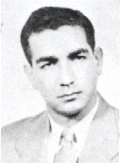 The
family of Carl J. Troia, MD'53, has established a scholarship
fund in his honor. The Carl J. Troia, M.D. Endowed Scholarship
will give preference to native Hawaiian students. While attending
Creighton, Troia The
family of Carl J. Troia, MD'53, has established a scholarship
fund in his honor. The Carl J. Troia, M.D. Endowed Scholarship
will give preference to native Hawaiian students. While attending
Creighton, Troia
made life-long friendships with several medical students from
Hawaii during a time in history when some medical schools
were not accepting students from our future 50th state.
Back
to Contents
|

